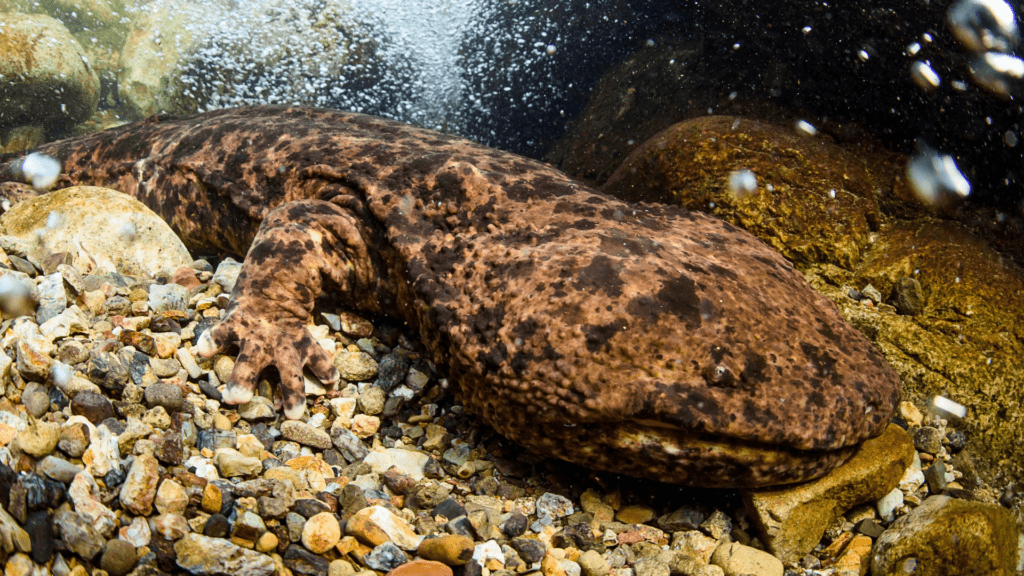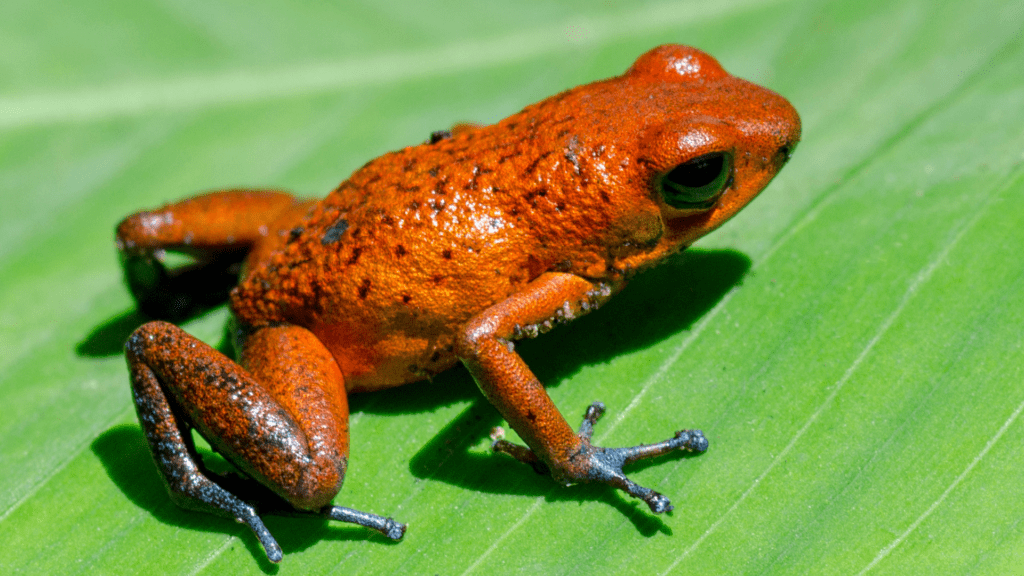Natterjack Toad (Epidalea calamita) is a unique species of toad native to various regions of Europe, known for its distinctive yellow dorsal stripe and its preference for sandy habitats. This fascinating amphibian holds a special place in ecosystems due to its behaviors, adaptations, and ecological roles.
Scientific Classification
| Kingdom: | Animalia |
| Phylum: | Chordata |
| Class: | Amphibia |
| Order: | Anura |
| Family: | Bufonidae |
| Genus: | Epidalea |
| Scientific Name: | Epidalea calamita |
Description
Natterjack Toad is easily identifiable by its distinct features and coloration.
- Size: Adults typically measure 6–8 cm, though males can grow up to 10 cm.
- Color: The dorsal side varies from olive, brown, to gray, covered in warts that range in color from green to red or dark brown. The bright yellow line running from the snout down the back is a hallmark feature. Their underbellies are creamy white with dark green spots, while males’ off-white throats are tinted blue or purple during the breeding season.
- Body: They have flattened bodies, short limbs, and partly webbed feet. Males develop nuptial pads during mating seasons.
- Head: Compared to the common toad, their eardrums are less visible. They possess parotoid glands behind their eyes.
- Eyes: Golden or green irises with horizontal black pupils distinguish their gaze.
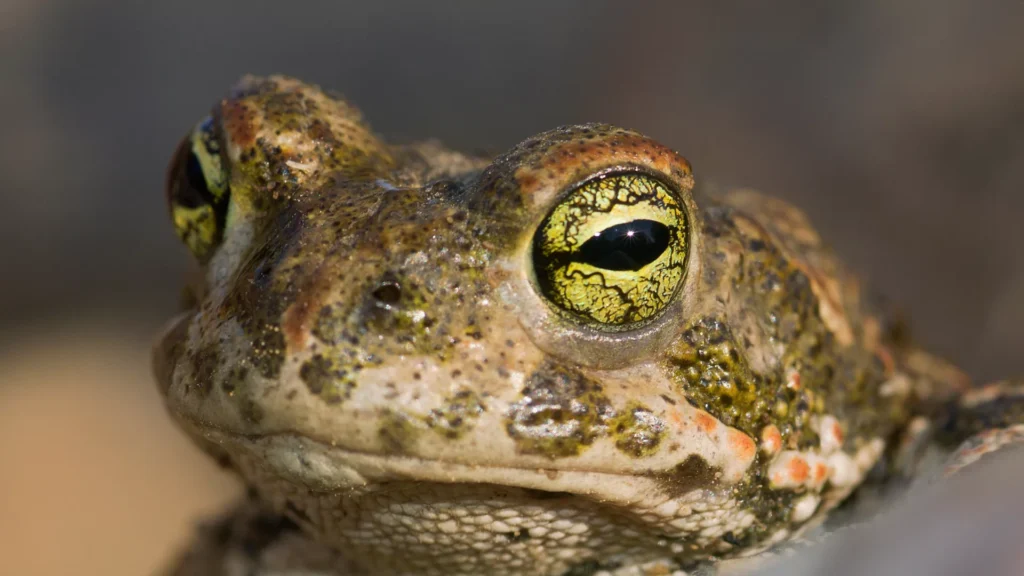
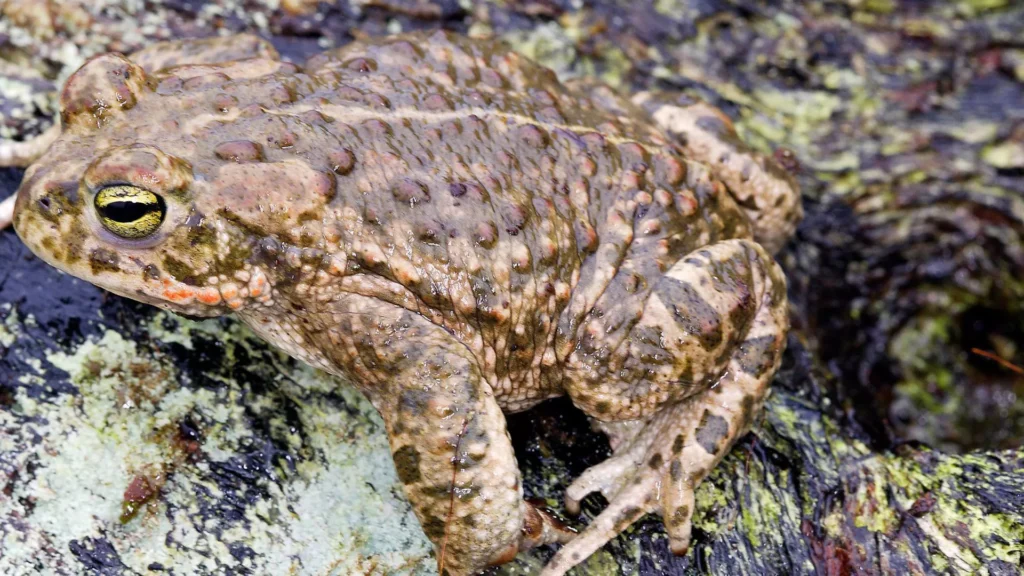
Distribution
The Natterjack Toad is found across southwestern and western Europe, extending eastward to regions like Ukraine and Belarus. It primarily inhabits sandy heathlands, coastal dunes, and lowland marshes, where it benefits from loose soils for burrowing. In the British Isles, this species occupies select habitats, with populations established in both natural and introduced sites. Conservation efforts focus on maintaining suitable breeding grounds, as habitat loss threatens its stability. Seasonal ponds play a crucial role in reproduction, providing the necessary environment for tadpole development. Climate and human activity influence its distribution and long-term survival.
Habitat
This species inhabits open fields, grasslands, sand dunes, and salt marshes, preferring sandy soils for burrowing. It is commonly found in regions with moist but well-drained substrates, which provide ideal hiding spots. The amphibian relies on shallow, temporary ponds for reproduction, as these environments offer safety from predators. Due to its limited swimming ability, it avoids deeper waters that could pose a survival risk. Seasonal rainfall plays a crucial role in creating suitable breeding sites. During dry periods, individuals retreat underground to retain moisture. Their habitat selection ensures protection while supporting their unique life cycle.
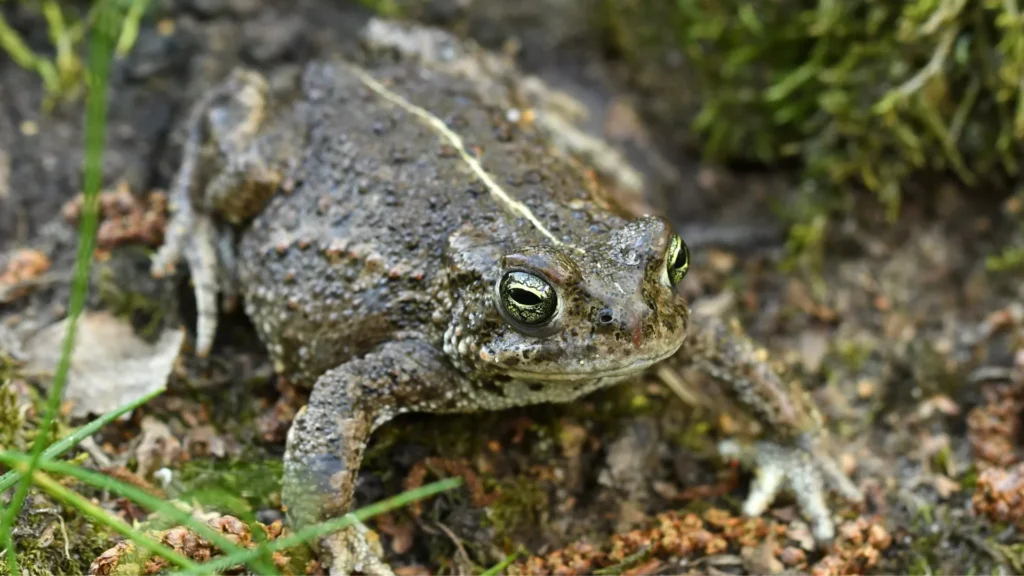
Diet
This species exhibits a varied diet depending on its life stage. Adults primarily feed on small invertebrates, such as ants, mollusks, worms, spiders, and beetles, occasionally preying on small reptiles. Their hunting strategy relies on quick movements and a sticky tongue to capture prey efficiently. Tadpoles start by consuming algae before transitioning to a more opportunistic diet, including dead fish, other tadpoles, and aquatic organisms. Their feeding habits play a crucial role in maintaining ecological balance. Seasonal availability of food influences dietary patterns, ensuring adaptability to different environments.
Behavior
These amphibians display fascinating behaviors adapted to their environment:
- Nocturnal: Active hunters at night, using their excellent vision to track prey in low light.
- Aggressive Hunters: They chase prey and employ a quick flick of their sticky tongues to capture it efficiently.
- Mating Calls: During mating seasons, males emit loud, raspy calls to attract females, typically in wetland areas.
- Burrow Defense: They rest near burrow entrances to quickly retreat into safety when threatened, utilizing their burrow as a refuge from predators.
Predators
Natterjack Toads and their tadpoles face a variety of predators throughout their life stages.
- Birds: Large birds, including magpies, crows, and herons, are known to prey on adult toads, often picking them off during their nocturnal activities.
- Mammals: Mammals such as otters, foxes, hedgehogs, and rats are common predators, hunting both the toads and their tadpoles, especially in wetland areas where these amphibians reside.
- Reptiles: Grass snakes may pose a threat to both adults and tadpoles, using their speed to catch prey in aquatic and terrestrial environments.
- Aquatic Predators: In their early life stages, fish, aquatic insect larvae, and even other frogs can consume the vulnerable tadpoles, limiting their survival. These threats highlight the importance of safe breeding environments.
Adaptations
The Natterjack Toad has developed several key adaptations to thrive in its environment:
- Running Legs: Unlike most toads, it has longer, powerful legs that enable fast, running movements instead of the typical hop, helping it escape predators quickly.
- Prolonged Reproduction: It uses temporary water pools for breeding, taking advantage of long mating seasons to maximize reproduction when conditions are ideal.
- Camouflage: Its distinctive yellow stripe helps it blend into sand sedge plants and sandy environments, providing effective protection from predators.
- Poisonous Secretion: The toad produces toxic secretions from its skin, acting as a defense mechanism to deter predators from attacking or consuming it.
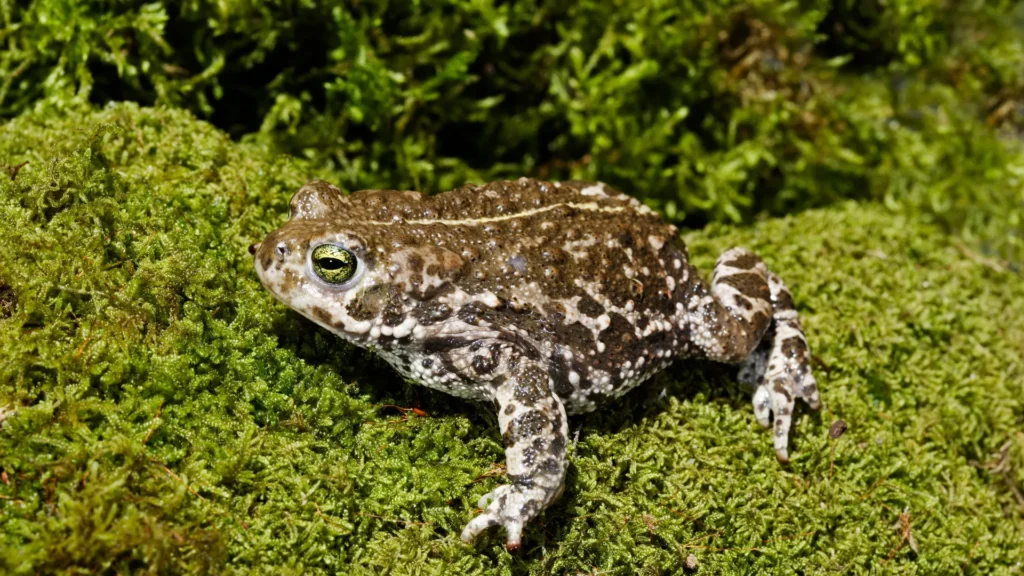
Lifespan
Lifespan
The average lifespan of a Natterjack Toad is approximately 15 years, although they can live longer under optimal conditions. Their lifespan can be influenced by factors such as habitat quality, predation, and environmental conditions.
Below is a breakdown of their lifespan:
| Life Stage | Average Lifespan | Factors Affecting Lifespan |
|---|---|---|
| Eggs | 2-3 weeks | Water temperature and quality |
| Tadpoles | 1-3 months | Availability of food and aquatic predators |
| Juveniles | 1-2 years | Survival through predation and environmental stress |
| Adults | 10-15 years | Habitat quality, predation, and health conditions |
In the wild, they can live up to 15 years if they successfully avoid predators and have access to suitable breeding environments.
Hibernation
Hibernation in Natterjack Toads begins in late October or early November. They dig burrows in sandy soil to seek shelter from the cold, where they remain dormant. During this period, their metabolism slows down to conserve energy. The toads emerge from hibernation in April, as temperatures rise and conditions become suitable for breeding and foraging. This hibernation period allows them to survive the harsh winter months when food is scarce and temperatures are low. It is a vital adaptation to ensure survival during the cold season.
Mating and Reproduction
- Season: Late April to July.
- Egg-Laying: Females lay 1,500–5,000 eggs in strings, often in double rows that narrow to single rows in shallow ponds.
- Maturity: Toads reach reproductive maturity at 3–4 years.
- Hatching: Eggs hatch in 7–10 days, with tadpoles metamorphosing into toadlets in 6–8 weeks.
Call
Male Natterjack Toads produce rasping mating calls amplified by external vocal sacs under their chins. These calls are often heard over long distances, particularly during group calling at night.

As Pets
It is illegal to capture or own these toads in most regions due to strict conservation laws. Special licenses are required in exceptional circumstances.
Conservation Status
The Natterjack Toad is classified as Least Concern (LC) by the IUCN, indicating a relatively stable population. However, it faces threats from habitat loss, pollution, and climate change. These factors impact its breeding and feeding grounds. Conservation efforts focus on habitat restoration and legal protection through initiatives like the UK Biodiversity Action Plan. These efforts aim to protect key habitats and ensure long-term survival. Continued action is needed to mitigate emerging threats and maintain healthy populations.
Interesting Facts
Here are some interesting facts about this species:
- The former scientific name of this species “Bufo calamita” means “running toad”. They derived this name from the fact that they move by running rather than hopping.
- This is the only Toad species native to Ireland.
- The call of the male Natterjack can be heard from distances of several kilometers.
- These creatures are often considered to be the noisiest amphibians of Europe.
faq’s
What is a Natterjack Toad?
it is a small toad species native to Europe, recognized by its yellow stripe down the middle of its back and its loud, distinctive calls.
How big does a Natterjack Toad get?
The Natterjack Toad typically grows to 6 to 8 cm (2.4 to 3.1 inches) in length, making it smaller than many other toad species.
What does a Natterjack Toad look like?
A greenish or brownish body with dark spots
A bright yellow or green stripe running down its back
Short legs, which make it a poor jumper compared to other toads
Where does the Natterjack Toad live?
The Natterjack Toad is found in sandy habitats such as coastal dunes, heathlands, and grasslands across Europe, including the UK, Ireland, and parts of mainland Europe.
What does the Natterjack Toad eat?
The Natterjack Toad is carnivorous and feeds on:
Insects
Spiders
Worms
Small invertebrates
Is the Natterjack Toad poisonous?
Yes, like many toads, the Natterjack Toad secretes a mild toxin from its skin to deter predators. This toxin is not harmful to humans but can irritate the eyes or mouth.
What is the lifespan of a Natterjack Toad?
In the wild, the Natterjack Toad lives for about 10 to 15 years, depending on environmental conditions.
How does the Natterjack Toad reproduce?
Breeding occurs in shallow, temporary pools during spring and early summer. Males call loudly to attract females, and females lay 3,000 to 7,500 eggs in long strings. Tadpoles hatch within a week and metamorphose into toadlets within 6 to 8 weeks. Natterjack Toad breeding is essential for species continuation.
Why is the Natterjack Toad endangered?
TheNatterjack Toad is considered endangered or vulnerable in many areas due to:
Habitat loss (urbanization, agriculture)
Pollution of breeding sites
Climate change (droughts affecting breeding pools)
What conservation efforts are in place for the Natterjack Toad?
Conservation efforts include:
Habitat restoration (creating and maintaining breeding pools)
Captive breeding programs to boost populations
Legal protection under wildlife laws in many countries
Can the Natterjack Toad be kept as a pet?

While it is possible to keep Natterjack Toad as a pet, it requires specific care, including a sandy habitat and a diet of live insects. However, it is best to leave them in the wild due to their conservation status.
What is unique about the Natterjack Toad’s call?
Natterjack Toad has a loud, distinctive call that sounds like a high-pitched trill. Males use this call to attract females during the breeding season.
How does the Natterjack Toad adapt to its environment?
Natterjack Toad is well-adapted to sandy habitats. Its short legs allow it to run rather than jump, which is useful for navigating loose sand.
What predators does the Natterjack Toad have?
Birds
Snakes
Small mammals
Larger amphibians
What can be done to help the Natterjack Toad?
You can help by:
Supporting conservation organizations working to protect the Natterjack Toad.
Raising awareness about the importance of habitat preservation.
Avoiding pollution of natural water sources.
